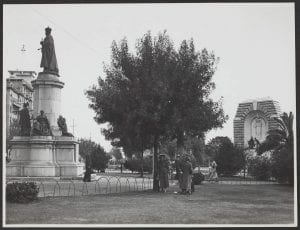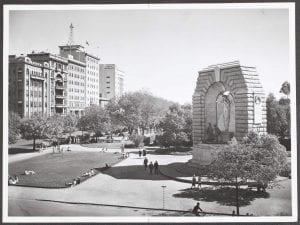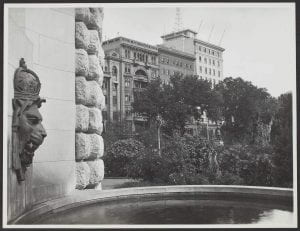The Spirit of Sacrifice: The First War Memorial in Australia
Yang Wang is a PhD candidate at the University of Melbourne’s Asia Institute. Her thesis analyses the political discourse of shengtai wenming (Ecological Civilisation) in China.
For South Australians, honouring and remembering the servicemen and women who made great sacrifices for the country during wartime, especially the First World War, is an indispensable part of their cities and towns. The National War Memorial located in Adelaide is such a mark of honour to the nearly 35,000 South Australians who served in the First World War and 30,000 who served overseas, with more than 5000 lost lives (King, 2013, p.170). Proposed in March 1919 by then Premier Archibald Peake, with the unanimous support of parliament, the government of South Australia determined to build the first memorial to the First World War in Australia. Designed to commemorate not only South Australian soldiers but all Australian servicemen and women, the memorial was named the National War Memorial, and after a decade’s efforts, was finally unveiled on ANZAC Day 25 April 1931, with an estimated 75,000 people, including 5,000 veterans attending the ceremony. Thereafter, the National War Memorial has been one of the most significant cultural, historical and tourist sites in South Australia.

A group of black and white photographs from the Commercial Travellers Association Collection (at the University of Melbourne) depict the exterior of the monument. With the dedication, The Spirit of Sacrifice, the National War Memorial was designed by South Australian architecture firm Woods, Bagot, Jory & Laybourne-Smith who won the second-round design competition. The reliefs and bronze statue bear great significance and were created by the sculptor, George Rayner Hoff (1894-1937), between 1927 and 1931. The reliefs have two distinguished sides like a coin, as shown in the pictures, with the obverse side of the monument, a large marble relief of the winged “Spirit of Duty” inside an arch and a bronze statue of three figures. The male figure holds a sword in his hands, however in front of the relief is a bronze statue depicting a farmer with a plough, a student, and a young girl. The photographs also capture lively moments of Adelaide street life on North Terrace in the 1930s and 1940s as men and women from different backgrounds walk past the National War Memorial or simply relax on the public gathering space in front. The sculpture and the statue serve as a daily incentive to the people passing by to remember the shadow of war. In a decade, there may have been changes, such as people’s clothing and the use of public gathering space surround the memorial, but a peaceful post-war scene remained, which echoes the spiritual victory and honours the resilience of the communities who created the monument.

The reverse side symbolises a different vision, after the war, and constitutes a marble relief of a winged spirit figure with the fountain of compassion beneath. The final picture shows a portion of the fountain and a crowned lion’s head with water flowing out of its mouth. The ceaseless flow of the water seems to murmur the touching lines by John Oxenham inscribed on this reverse side of the Memorial:

They died that we might live.
Hail and farewell!
All honour give
To those who, nobly striving,
Nobly fell—that we might live.
Leave a Reply